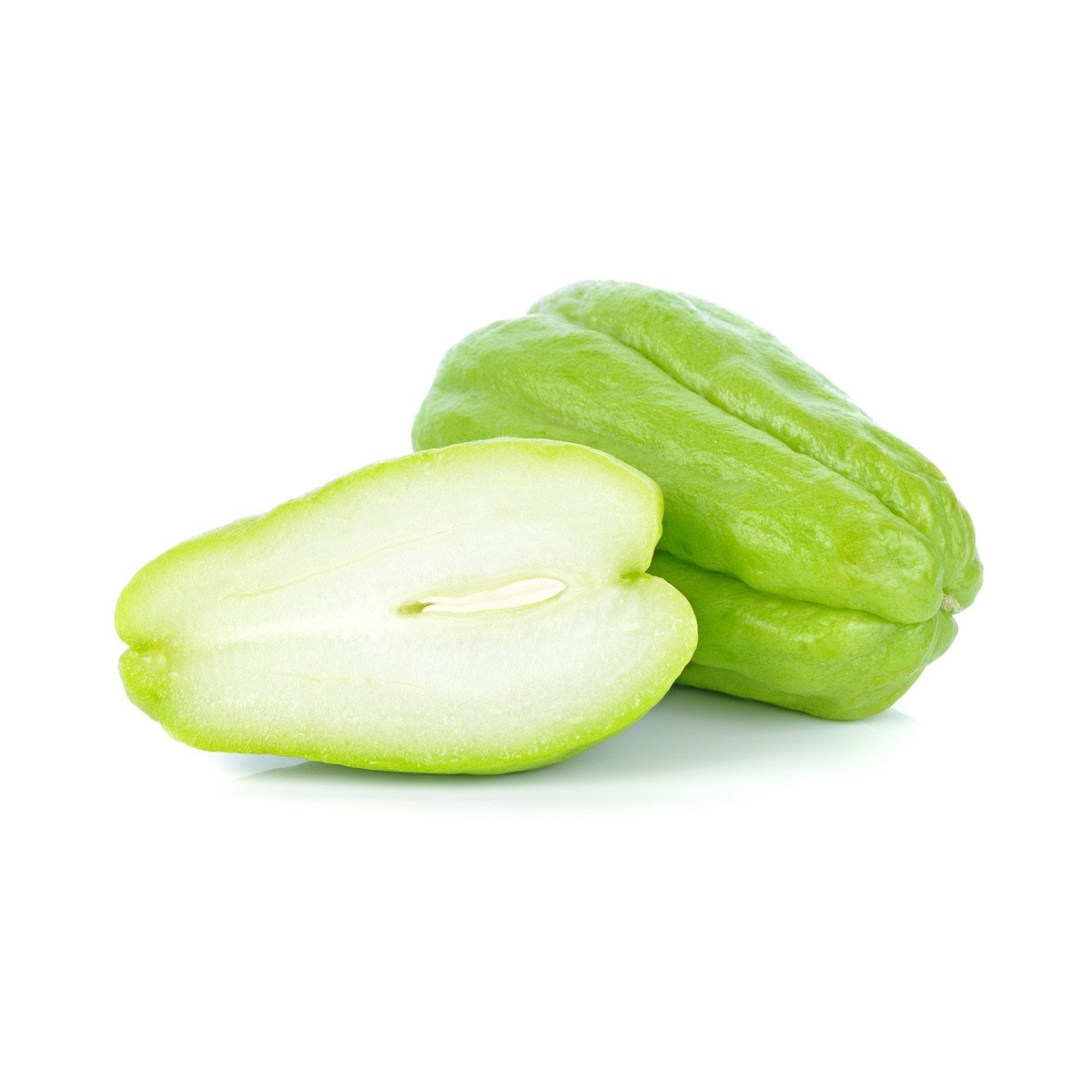Chayote

Chayote
Sechium
Plant family
Curcurbits (Cucurbitaceae)
Also known as
Mirliton, Choko
Season Overview
Propagating
Planting
Harvest
J
F
M
A
M
J
J
A
S
O
N
D
Details
Light requirement
Sunny
Water requirement
Moist
Soil
Medium (loamy)
Nutrient requirement
High
Plant distance
100 cm
Row spacing
100 cm
Seeding depth
7 cm
Instructions
Description
The chayote (Sechium edule) is classified in the gourd family (Cucurbitaceae). It has a very strong vine and besides the fruit, the young shoots and roots are also edible. The light to dark green, pear-shaped fruits with their firm flesh grow between 10-20 cm/3.9-7.9 in in size and weigh up to 1 kg. The skin may have furrows or spines or may be smooth. They can only be stored for a short time, as the pit inside the fruit quickly begins to germinate. The plant is actually perennial, but due to its sensitivity to frost, it is rarely overwintered in our country. It can also be grown in tubs and it is best to attach the tendrils to a scaffold. The taste is reminiscent of zucchini or kohlrabi.
Origin:
Central America
Growing tips
Chayote likes it warm and in cool regions is recommended to grow in a greenhouse, but in doing so it can take up a lot of space. It is a heavy grower. Under its tendrils can grow well plants that like partial shade. The change of culture should be taken into account. To grow the chayote you can simply put the ripe fruit halfway into the soil (the pot should hold at least 5 liters). Keep the soil in the 2-3 only slightly moist and place in a warm place (25-29°C/77-84°F). Then roots and shoots should have formed. Now water well and and tie up the plant. After the last frosts, plant out and place in fertilized soil at a 45° angle up to the base of the shoot. Continue to water regularly and also fertilize. In between shoots should be shortened or cut off, otherwise the plant can gain the upper hand and at the same time it ensures healthy growth. Several chayote plants next to each other increase the yield, but are not necessary for fertilization, as they are pollinated by insects. The fruits are harvested continuously when they are still hard, as they can rot quickly. Harvest before the first frost at the latest. Treatment with horsetail tea prevents powdery mildew.
Companion Plants
Antagonistic Plants
Diseases
Soft rot
Grey mold
Downy mildew
Powdery mildews
Pests
Land snails
Spider mites
Leaf-miner flies
Aphids
White fly